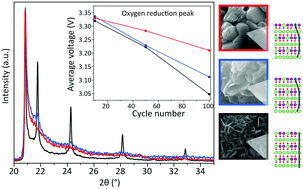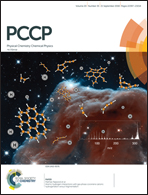Enhanced electrochemical performance of Li-rich cathode materials through microstructural control†
Abstract
The microstructural complexity of Li-rich cathode materials has so far hampered understanding the critical link between size, morphology and structural defects with both capacity and voltage fadings that this family of materials exhibits. Li2MnO3 is used here as a model material to extract reliable structure–property relationships that can be further exploited for the development of high-performing and long-lasting Li-rich oxides. A series of samples with microstructural variability have been prepared and thoroughly characterized using the FAULTS software, which allows quantification of planar defects and extraction of average crystallite sizes. Together with transmission electron microscopy (TEM) and density functional theory (DFT) results, the successful application of FAULTS analysis to Li2MnO3 has allowed rationalizing the synthesis conditions and identifying the individual impact of concurrent microstructural features on both voltage and capacity fadings, a necessary step for the development of high-capacity Li-ion cathode materials with enhanced cycle life.



 Please wait while we load your content...
Please wait while we load your content...